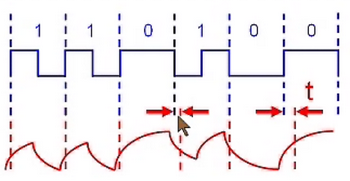in practical listening, someone wont even able to notice it to large extent.
Then I wonder why every discussion on digital music reproduction via usb - both hardware and software is related to jitter and its reduction?
Cheers,
Sid
in practical listening, someone wont even able to notice it to large extent.
Then I wonder why every discussion on digital music reproduction via usb - both hardware and software is related to jitter and its reduction?
Cheers,
Sid
as good quality Rs 1000 cable, is not expected to cause any jitter. That too 100% of the time and hence cause a bad quality audio listening to a whole song.
i will end my debate here
To me external power makes a noticeable improvement
I guess the USB thing does not affect me - S/PDIF.
While I am not particularly interested in listening to differences, do you think a schiit bifrost will be good enough ?
Thanks
ciao
gr
Now someone can come and say try a 10K/20k cable, which i wont even try.
But if someone with loads of $$$$ can spend such exhorbitant amount for a USB cable and also have ears to notice the difference, if at all it is there.
Hi,
While I agree with you mostly, I disagree on this point.
Jitter is an issue ONLY when there is conversion from Digital to analog or the other way around.
Other things cables etc AFAIK (if you'll permit the cheap pun) have not even a "bit role" to play.
ciao
gr
A signal is Always Analogue even though we call it digital
It is digital only when it is "stored"
Okay.
what goes through the coax / toslink/ hdmi to your DAC is digital too.
Analog vs digital - digital can never sound as good, right ? Wrong...
ciao
gr

the signal transmission is actually analogue. From what i could find out it is not 0s and 1s but a wave (not a square one)
The above is using the bi phase mark code hence the smaller 1-0 transition (2 times) is a 1 and the wider one (only once) signifies a 0.
From the article you quoted
Every bit of the original data is represented as two logical states, which, together, form a cell. The length of a cel ('time-slot') is equal to the length of a databit. The logical level at the start of a bit is always inverted to the level at the end of the previous bit. The level at the end of a bit is equal (a 0 transmitted) or inverted (a 1 transmitted) to the start of that bit.
The signal may be transmitted electrically but it is made up of 1 and 0 ie bits
How does it work with an optical cable ?
The idea of the circuit is that the digital data is fed through a series current limiting resistor to the LED (typically LEDs only require 5-30mA). A digital 0 is 0V and the LED is off. A digital 1 is +5V and the LED is on. That's it!
The data stream is digital. Further processing is digital/ conversion to analog. Try out this thought experiment feed that output to an amp, can you expect to hear Mahler's fifth ? No. The waveform is therefore not an analogue music signal . QED ?
S/PDIF transmits a digital signal
http://www.hardwaresecrets.com/article/everything-you-need-to-know-about-the-spdif-connection/82
ciao
gr
All I am saying is that wave propagation in a cable is still analogue in nature and subject to the same challenges a analogue signal has and hence the cause of jitter .
The signal is digital..no doubt about it.
The transmission of the digital data is electrical or optical but is 1 and 0 and not analogue. It is not an analogue signal. It is not treated as an analogue signal (To take your interpretation, i am typing this on an analog computer and transmitting it over an analog internet because somewhere an electrical/ optical state is used to represent my post)
And No the transmission does not induce any jitter
The cable is not the cause of jitter
ciao
gr
So what happens if we use a SPDIF cable which is not 75 ohms but say 25 ohms ? We still get music in the end and it is NOT broken music. What kind of errors going on in the transmission ?
By the way, I have tried many 75 ohms (claimed) digital cable in my system and they all sound different, so something must be going on in the "analogue" domain to affect the digital data.
The transmission of the digital data is electrical or optical but is 1 and 0 and not analogue. It is not an analogue signal. It is not treated as an analogue signal (To take your interpretation, i am typing this on an analog computer and transmitting it over an analog internet because somewhere an electrical/ optical state is used to represent my post)
And No the transmission does not induce any jitter
The cable is not the cause of jitter
ciao
gr
Lots of reflections between the sender and receier which will blur out the edges - that is what my personal experience is when using a less than optimal cable.
So what happens if we use a SPDIF cable which is not 75 ohms but say 25 ohms ? We still get music in the end and it is NOT broken music. What kind of errors going on in the transmission ?
By the way, I have tried many 75 ohms (claimed) digital cable in my system and they all sound different, so something must be going on in the "analogue" domain to affect the digital data.

